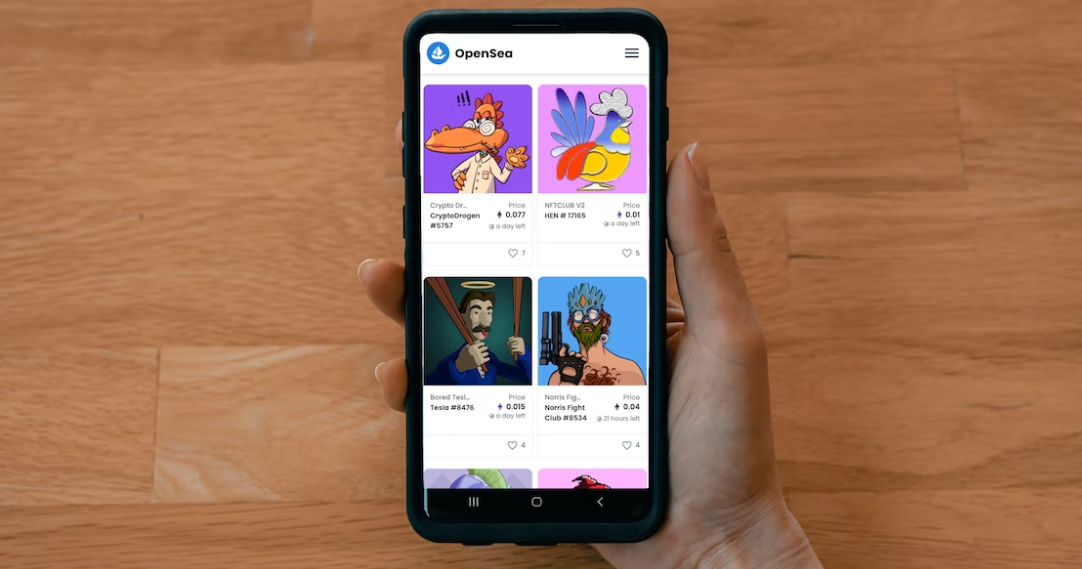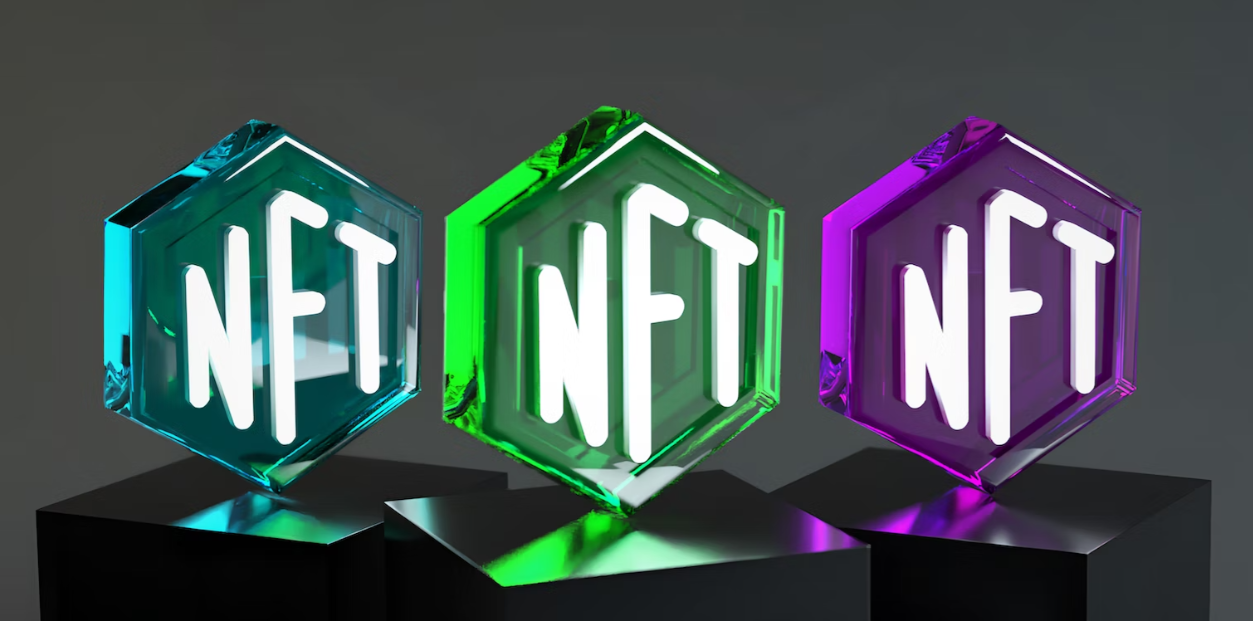The proliferation of NFT markets gives individuals a once-in-a-lifetime opportunity to show up and showcase their collections. This is done to facilitate more effective management of digital assets. If starting with NFTs, you should begin with our A-to-Z tutorial. You should use these guides whether you merely wish to generate, buy, sell, and auction non-fungible tokens or if that is your company’s primary focus.
What is NFT Marketplace?
An NFT Marketplace Development Company usually keeps track of what’s happening in the NFT marketplace Development. Researching the ecology of NFT platforms begins with defining what is being studied. Each NFT is unique since it has its unique identifying number and information. Since they are digital, no standard unit of value can be used to buy or sell them. New Forms of Media can take many forms, including but not limited to photographs, songs, movies, and other forms of art.
NFT marketplace is a public Blockchain platform. This platform is very young, but NFT developers and businesses are building a marketplace. Digital asset exchanges are the current financial trend. To enter the internet market, build your own. Nowadays, many individuals sell things across different platforms, and terms like Bitcoin trading and blockchain development technology are common terminology.
General Information of NFT Development

In contrast to fungible markets, which use the same currencies and blockchain across all of them, non-fungible markets accept a variety of distinct currencies. In their separate ways, each has advantages and disadvantages. Digital assets are distributed via universal non-fungible token websites and specialized peer-to-peer exchanges. In 2024, we may anticipate the debut of brand-new NFT marketplaces. All of these options are excellent routes to acquiring additional collectibles. Those working on NFT markets might draw inspiration from these solutions.
- OpenSea: It is the most well-known corporation involved in the use of non-fungible tokens. Art, sports memorabilia, and trading cards are examples of NFTs. This NFT platform is known as Decentraland and ENS. Trading card games and collectibles are among the most popular. The site has gained over 600,000 visitors since its start in early 2024. Minting equipment can produce customized items. This feature is completely free. One way to join OpenSea is to create a blockchain smart contract for a decentralized app or collection that uses unique goods.
- Atomic Hub: Atomic Hub is a fantastic NFT marketplace developer for digital artwork. As of today, 224.0M NFTs have been created there. Using the Wax blockchain, it is among the top spots. Customers can use the local Wax currency to make purchases and trades. For example, shoppers who sign up can trade items for 25 cents each. Putting together an NFT collection here couldn’t be less complicated. Users can make their products from the start or follow a predetermined theme while creating their collections.
- SuperRare: An additional case can be the foundation for an NFT market. This service is a cutting-edge development in the field of digital cryptography. However, not everyone can make use of this service. SuperRare only allows well-known writers with significant bodies of work to be published and sold on the site. It may not be easy to complete the sign-up and verification processes. Furthermore, Ethereum is required for participation in exchanges.
- Rarible is an NFT supplier available to blockchain participants. Artists can easily trade non-financial ideas (NFTs). Rarible rewards loyal customers and top sales with incentives. Those actively participating in the system are rewarded with $RARI, a local currency. It makes NFT exchange instant. On this NFT creative platform, artists may freely publish songs, albums, films, domains, photographs, trading cards, and alternate universes. I liked the variety.
Important Features To Consider For NFT Marketplace Development
Once we get into the features, consider why NFTs and NFT marketplaces are so popular. Blockchain technology securely records all rights and facilitates digital asset management. Anyone may trade NFTs. Blockchain development technology ensures customers’ orders are met.
- Storefront for NFT marketplace: This is the single most important job. Previews, bids, owners, and running price history, among other data, should all be stored in this choice.
- Wallet for NFT marketplace: Consumers must have a trustworthy online destination for the receipt and storage of NFTs. Different solutions pose different risks to financial safety, and these solutions vary widely. The NFT market service needs a pre-configured wallet for customers to deposit and withdraw tokens safely.
- Search bar for NFT marketplace: Consumers should be able to find out as much as they can about the products they want as quickly and easily as possible. Everything should be put into groups based on the choices that can be made. Clients are happier when a search doesn’t take much time or work.
- Create Listings for the NFT marketplace: Permit your customers to send and create their collectibles. Assist them in doing so quickly and without difficulty. Please create a form on which people may submit a file and their information. A title, a description, and tags are essential elements of information.
- Buy or auction for NFT marketplace: In e-commerce, customers may buy and bid on things. Some customers prefer to wait until the price reduces before buying collectibles, attracting a bigger audience. Bidding is fun. Also, set a bid deadline. Buyers should know the current bid status. It helps online auction participants decide whether to buy a digital object altogether or keep bidding.
- KYC/AML verification for NFT marketplace: The marketplace conducts KYC/AML verification for safety purposes and maintains an anonymized record.
A Brief Introduction To NFT Marketplace Development

The following are the measures required to construct a custom NFT marketplace development solution:
- First, choose whether you want to target a broad audience or a specific niche. Providing a comprehensive list of NFTs rather than just one choice will help you reach more people.
- Second, decide which blockchain platform you want to use for the marketplace. Ethereum and Binance Smart Chain are two of the most well-known examples. Your platform can also be configured to work with numerous blockchains simultaneously.
- Once you have settled on a blockchain and a certain market niche, you can begin to think about the user interface and user experience of NFT marketplace development. First, ensure an easy experience for your users.
- The next stage is to create and implement smart contracts for your market. Again, experts familiar with applicable regulations should be consulted for this purpose.
- The fifth step is to find a safe place to keep the NFT that has been created and purchased. In addition, be sure that your platform safely stores all transaction records.
- Integrate Third-Party Services: Payment gateways, Cryptocurrency wallets, social media platforms, and email services are just some of the third-party services that must be integrated into a thriving NFT marketplace. The resources above from external vendors are minimal; however, you may need considerably more. It is up to you and your company to decide how many integrations you need.
- When you have finished creating the foundation for your NFT market, it is time to put it through its paces in a series of tests. This method may fix the system’s flaws and improve the product.
- To conclude the process, step eight is to launch and maintain your NFT marketplace going forward. To meet the demands of your user base, you will need to enhance and modify your platform’s NFT marketplace.
The term “white-labeling” describes the process of disguising a product’s or service’s natural origin. For example, artists, collectors, and dealers can use the NFT Marketplace, a decentralized digital market, to buy and sell non-fungible tokens representing artworks and other assets.
NFTs Best Known Examples
- Digital Artwork
- GIFs
- Digital collectibles
- Music
- Videos/Clips
- Tweets
- Games
- Creative Writing
- Pattern
Why are NFTs Popular?
NFTs’ widespread acceptance can be due to their versatility as a substitute for physical and digital assets. For example, a token representing ownership of a home, piece of property, or even a pair of shoes might be created on a blockchain development platform like Ethereum or Cardano. If this were to occur, it would result in a traceable record of possession.
Axie Infinity and other P2E NFT video games are gaining popularity quickly. These NFTs may be used in many ways, including as proof of ownership, stand-alone works of art, and playable characters in the game.
New Financing Technologies (NFTs) pave the way for open and verifiable digital asset ownership, trading, and transfer. Using NFTs, you may create a distributed, reliable, and efficient market for buying and selling goods and services. NFTs have applications outside monetary transactions, such as marketing and public relations. This is why many businesses are turning to NFT marketing agencies to help them create and promote their unique digital assets. If NFTs become widely used, the global economic system may need to be rethought.
Conclusion of NFT Marketplace Development
NFT Marketplace development is a rapidly growing market trend. Rising demand for the underlying network drives up the price of non-fungible tokens. On the other hand, you may hire a software development team to create a custom web application.
And because of their potentially lucrative futures, investors are flooding into blockchain development systems. Since this is the case, the NFT industry is a promising one in which to put money. Because of this, getting your NFT platform up and running as quickly as possible is vital if you want to start generating millions off the backs of other people’s creations. First, create your own NFT marketplace with the help of NFTically, currently the finest option available. Since it provides many great advantages, creating a virtual storefront requires minimal effort. Now you may open doors to NFT fans, art lovers, and A-list celebrities.
To understand crypto assets, you could take courses or do further reading on the subject. You may even talk to an expert to learn more about crypto.
